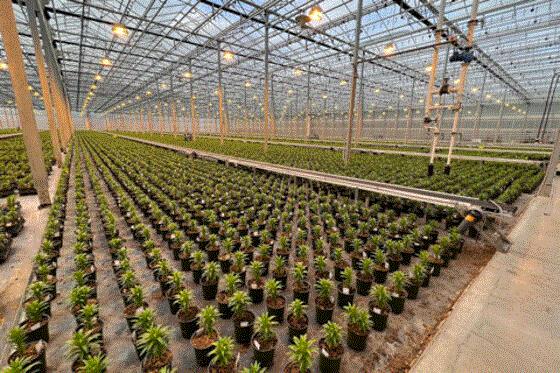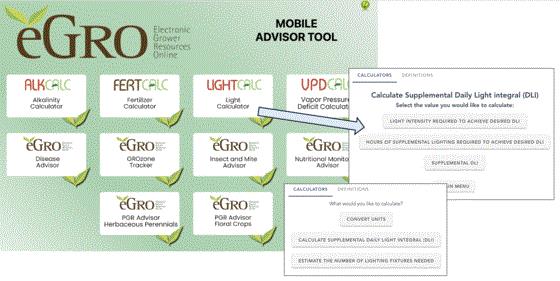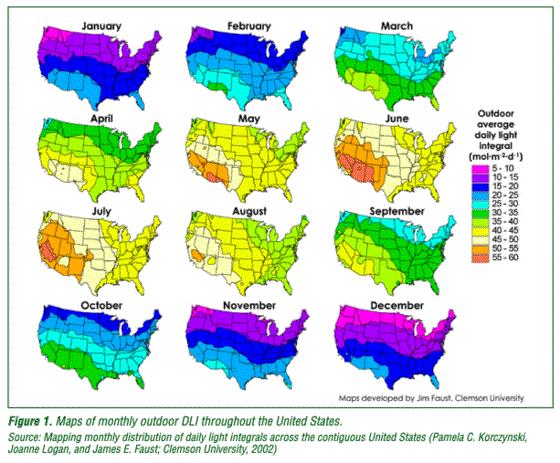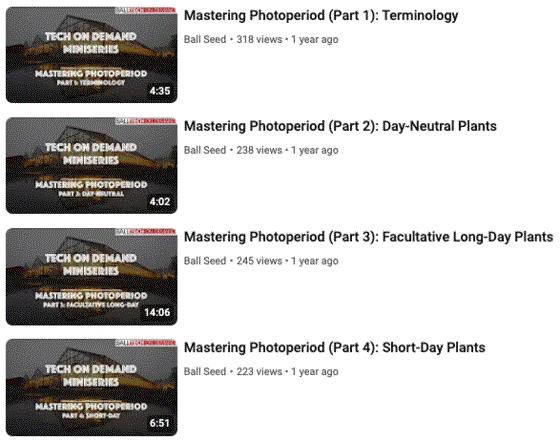NEW VIDEOS! Lantana Prop & Finish
I’ve been posting videos fast and furious the past couple weeks and want to call your attention to two of the new ones. I recently worked with Ball technical services specialist Chris Ferguson on two videos related to lantana production. Judging by the download numbers even before I did much promotion, the topic is of considerable interest.
Lantana has become a critical vegetative crop across North America, with tons of retail and landscape appeal, but like many other species, the early stages of propagation require careful attention to avoid losses.

In LANTANA PROPAGATION BMPs, Chris takes us through receiving, prioritizing and handling lantana URCs and through all stages up until transplant. His goal is to help you reduce risk and produce top-quality liners.
Following up on the prop video, Chris then delves into finishing tips and tricks. Lantana comes in so many amazing colors and habits—it’s come a long way from the days of gold … and, well, gold. With all of this new breeding and huge consumer demand comes a need for top-quality finishing strategies so you can send the absolute best plants to market. As consumers turn to more drought-tolerant plants for their landscapes, patio pots and mixes, lantana is poised for even more growth.
But delivering high quality comes down to production planning and best practices. Check out FINISHING TOP-QUALITY LANTANA CROPS for Chris’ awesome run-down of what you need to know.
To provide this information in any way you (or your team) choose to consume it, we’re happy to offer both of these lantana videos as podcasts, as well as videos. Be sure to subscribe to the Tech On Demand podcast on your favorite app so you never miss an episode. And this winter, why not jump back into the archives and get caught up—there are 154 episodes as of today!

Nick’s Tip of the Week: Level Up Your Light Game
Each week, I’ll work with my buddy Nick Flax, a technical services expert at Ball, to share a concern that’s come up during one of his numerous calls with growers across North America. This week, he’s talking light and offering some bright ideas to consider as you head into spring production.
PROBLEM: Plants cannot grow and develop properly if one of the five factors of plant growth (water, light, gas exchange, mineral nutrients, proper temperatures) is absent or lacking. In early spring, it is light that is often the most limiting factor for many of you.

NICK’S TIP: Here are a few basic ways to think about the importance of light in bedding plant production—particularly in early spring:
-
Plants accumulate light energy in the photosynthetically active radiation (PAR) spectrum to grow. This includes light from the blue to red range (about 400 to 700 nm, respectively).
-
Think of PAR accumulation in plants like a “rain gauge for light energy.” The harder it rains and the longer it rains, the more total inches of water a rain gauge collects. In the same way, the more intense light levels are in the greenhouse and the longer the daylength is, the more light energy plants can soak up to drive additional growth.
-
The more light energy your crops can absorb, the more nodes they can form. More nodes mean more places for axillary shoots and/or flower buds to develop. This results in larger, bushier plants and more color on crops at finish.
Maximize Light Whenever Possible
In early spring, your geography has everything to do with maximum potential light intensity and daylength. In the northern hemisphere, the further north you are, the further you are from the sun and the shorter your daylength is in winter and early spring (due to Earth’s axial tilt). This means sunlight is less intense and your plants have a shorter window in which to soak up PAR energy during the day. Light intensity increases and days get longer as spring progresses, but plants need optimal light now to grow vigorously (and remain compact and aesthetically pleasing.)
The addition of high-intensity discharge (HID) lights is a logical solution to address low light. Fixtures like LEDs (light-emitting diodes) and HPS (high-pressure sodium) lamps are commonly used in the greenhouse to supplement natural light levels. However, buying and installing these fixtures isn’t cheap, so it’s not always economically feasible to add lights, so consider these additional methods of maximizing light levels in your greenhouses.
Glazing material age: If your greenhouse is covered with polyethylene film or rigid polycarbonate, the age of your glazing has a big impact on light levels at crop height. As the sun degrades plastics, they darken in color and/or become somewhat opaque, which reflects (or absorbs) light energy from the sun and keeps it from reaching your crops. Follow manufacturer recommendations on when you should replace your glazing material and avoid the temptation to “get another couple of years out of it” if your spring crops have tended to get leggier or grow more slowly in recent years.
Glazing material cleanliness: Dirt, dust and algae on your roof and sidewalls all block light. Wash both the inside and outside of your greenhouse glazing and sidewalls each year. Pressure-washing with clear water is often sufficient but be careful not to damage your glazing material. Also, if you include a detergent of some kind, check your glazing manufacturer’s specifications and care instructions to ensure it is safe to use. Many companies offer specific cleaning recommendations, so reach out to your suppliers when in doubt.
Change your shading strategy: Many of you apply a liquid shading compound to the outside of your roofs or sidewalls in summertime to keep the greenhouse cooler and block excess light. However, if you do not fully remove this before winter, shading compounds can accumulate and block the light your crops need in the early season. While the old white latex paint dilution works and is still used by many to “whitewash” their structures, it can sometimes be hard to remove completely. Consider use of products like ReduSol that have “release” agents to enable quick and easy removal of the shading compound when you want to take it off.
Manage crop spacing: If weather and glazing conditions cannot be remedied right now, consider how closely your plants are spaced on the bench or floor. The tendency to stretch is often a response to low light intensity, so adjust the space between your crops to help light penetrate lower into the canopy and reduce competition for light among plants that are next to each other.
Also, wait for as long as possible before you hang your basket crops above plants on the bench or floor. Until natural light intensity and daylength increase, placement of crops above your main growing surfaces will only reduce light levels at crop height and diminish their ability to accumulate light energy.

Josh Onsite Measuring Light Levels
We have a series of “onsite” videos featuring Tech On Demand experts in greenhouse discussing important tasks and bringing new information to help clarify processes and offer quick training opportunities for you to share with your production team.
So far, we’ve covered seed storage, seeding, transplanting, conducting in-house pH and EC testing, and preparing foliar and soil samples. This ongoing VIDEO SERIES grew last week when we caught up with Josh Henry at the Ball greenhouses in West Chicago. Josh brought along his Apogee ePAR, DLI and photoperiod meter and talked about how to use a light meter correctly and in ways that can really help you in crop production.

In fewer than five minutes, Josh explained how and why it’s important to take light measurements and understand your light levels. Check out TECH ON DEMAND ONSITE: MEASURING LIGHT IN THE GREENHOUSE.
Lighting Resource: e-GRO's LightCalc
Our friends and leading horticultural researchers at e-GRO make awesome mobile tools and calculators for growers—alkalinity, fertilizer, VPD, disease, pest and PGRs, to name a few. One such calculator available is LIGHTCALC. Click the link and bookmark it.
Along with a fantastic glossary of terms, there’s are three very handy tools to convert lighting units, calculate your supplemental daily light integral (DLI) and estimate the number of fixtures needed in your growing space to accomplish your goals and meet the needs of your crops.

Whether you’re using high-pressure sodium fixtures or LEDs, you can easily convert units into µmol∙m–2∙s–1 using LightCalc. When considering DLI, the tool helps calculate the light intensity required to achieve your desired DLI and the hours required. And for facility planning, you can use LightCalc to determine the number of fixtures need to achieve the light intensity and other parameters required, as well as calculating cost and other factors.
Your best bet is to check out LIGHTCALC and play around with it!

DLI Deep Dive from Purdue
Above, I’ve shared tips from experts, a video about how to use a light meter, and a tool to help understand where your light levels are and strategies to get them where they need to be. But that’s really just the tip of the proverbial iceberg when it comes to greenhouse lighting.
For much, much more, here’s an article from Purdue extension titled MEASURING DAILY LIGHT INTEGRAL IN THE GREENHOUSE written by Ariana Torres and Roberto Lopez. They explained what light is (with a focus on horticulture, of course), common ways light is measured, the importance of DLI, and why supplemental lighting is beneficial. But that’s not all.

In the article, Ariana and Roberto shared charts and graphs from projects looking at monthly outdoor DLI across North America and DLI requirements for a long list of common greenhouse crops. There’s so much info in this article packed into seven pages. This is one you should probably bookmark or print out as a reference.
Finish Line … One more lighting resource
Before I wrap this up (Christmas pun), let me drop one more resource on you, since some days off are on the horizon and you’ll no doubt want to binge-watch horticultural videos instead of Hallmark specials.

Last year, I enlisted Dr. Will Healy to create a mini-series of videos covering photoperiod. We called it MASTERING PHOTOPERIOD . In it, the good doctor broke down current research related to photoperiod response of greenhouse crops into understandable information to help you avoid flowering and growth issues and nail your crop timing.
Will took a quick trip through the three different flowering classifications—Day Neutral, Long Day and Short Day—with plenty of time spent on major crops that fall into each group.
If you want some time alone during the upcoming holidays, stream the photoperiod mini-series to your family room TV and I assure you, you will get some peace and quiet away from friends and family.
Until next week … Good luck getting any last-minute gifts from Amazon. We’re pretty much down to gift card time.




Please feel free to send your comments, constructive criticism and topic ideas to me at bcalkins@ballhort.com.

Bill Calkins
Editor - Tech On Demand
This email was received by you and 25,720 other fine subscribers!
If you're interested in advertising in Tech On Demand, contact Kim Brown ASAP and she'll hook you up.